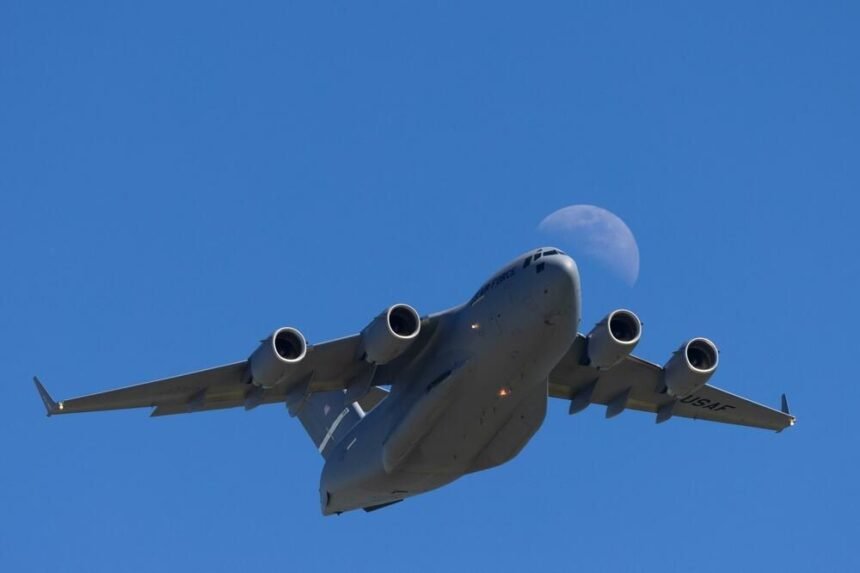U.S. military aircraft begin deporting migrants, following President Trump’s executive order to send more troops to the southern border, including elite airborne divisions.
Under the directives of President Donald Trump, the U.S. military has started deporting migrants, with military aircraft now transporting migrants back to their home countries. This follows the executive order issued on January 20, which instructed the Pentagon to deploy as many troops as necessary to achieve “full operational control” of the U.S.-Mexico border.
Trump’s Border Control Measures
On his first day in office, Trump declared illegal immigration a national emergency, directing the U.S. military to assist in securing the border. This includes imposing a wide-ranging asylum ban and moving towards restricting citizenship for children born on U.S. soil.
The White House spokeswoman, Caroline Levit, confirmed that deportation flights had begun, with two C-17 military aircraft departing with around 80 migrants each on January 24, heading to Guatemala.
Further Military Deployments Expected
This move is part of a broader military escalation at the U.S.-Mexico border. The Pentagon has already announced the deployment of an additional 1,500 active-duty soldiers. Plans are underway to send a second wave of troops as early as next week, including soldiers from the 82nd Airborne Division, a specialized unit known for rapid deployment in crisis situations, typically in conflict zones rather than border control duties.
The U.S. military officials have indicated that the total number of troops could reach thousands, although no final decision has been made. These figures are still being discussed, with the number of soldiers dependent on several factors, including military readiness.
Military Discussions on Larger Deployment
Earlier this week, informal discussions pointed to the possibility of sending up to 10,000 soldiers to the border over time, although the final numbers remain undetermined. As these developments unfold, the situation continues to raise questions about the role of the military in domestic border security and the ongoing debate over immigration policies.







